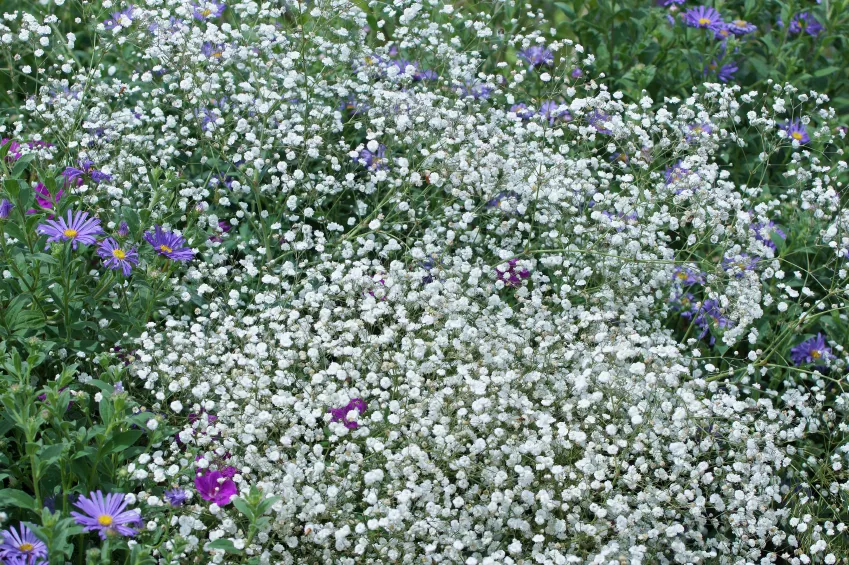There are different types of gypsophila, both annual and perennial. Colorful annual Gypsophila, Gypsophila muralis in Latin, is often used for planting in pots and balcony boxes. Gypsophila paniculata, the gypsophila, on the other hand, is hardy.
 Gypsophila is available as an annual plant and as a perennial, hardy perennial
Gypsophila is available as an annual plant and as a perennial, hardy perennial
Particularly decorative varieties Gypsophila
The giant gypsophila (Crambe cordifolia) lives up to its name with a maximum growth height of 1.80 m. Its heart-shaped leaves are unusual but very decorative. The giant gypsophila blooms in June and July. The high gypsophila (Gypsophila paniculata) is less large, but has a pretty spherical or bushy growth habit.
The 1.20 m tall variety 'Flamingo' also belongs to the perennials. The pink-red filled flowers will delight you until October. The opposite of this is the gypsophila (Gypsophila repens) with a growth height of about 10 - 20 cm. It forms decorative carpets of flowers in white or pink and is ideal for rock or roof gardens.
The flowers of the variety 'Rosa Beauty' are dark pink. Gypsophila repens 'Alba', on the other hand, has classic white flowers. The 'Rosea' variety also shows its pink-colored, abundant blooms from May to July. This groundcover also grows on dry stone walls or decorates your balcony boxes.(109.00€) You can also use it for small bouquets, such as a bridal bouquet. Tall varieties are better suited for large bouquets.
How do you overwinter gypsophila?
If you leave annual gypsophila out over the winter, it might sprout itself. However, it is not winter hard. Cut perennial gypsophila about a hand's breadth above the ground in autumn. Bedding plants do not need protection from the cold. However, they should be protected from too much moisture, otherwise they will get root rot and will not survive the winter.
The essentials in brief:
- both annual and perennial
- Annual varieties have a greater variety of colors
- perennial gypsophila is hardy
- both perennials and ground covers
tips and tricks
If you want to know whether your gypsophila is actually perennial, it is best to ask about it when you buy it. From annual varieties, you can collect seeds to sow them next spring.